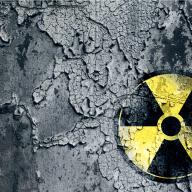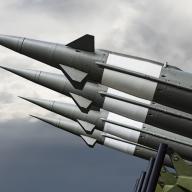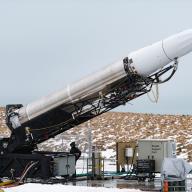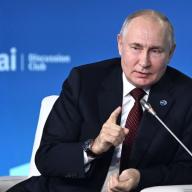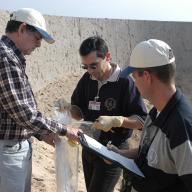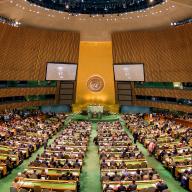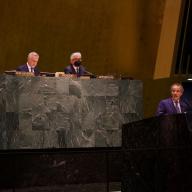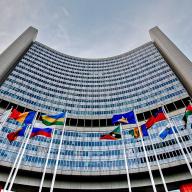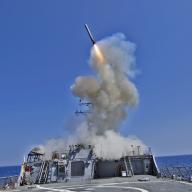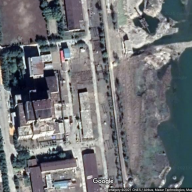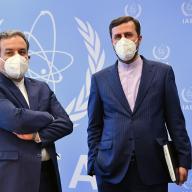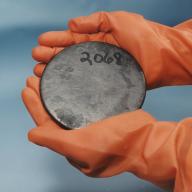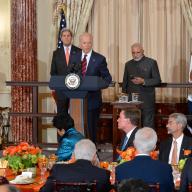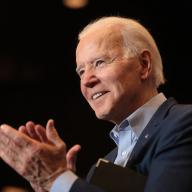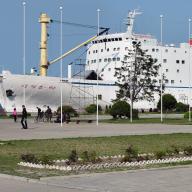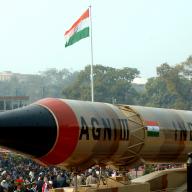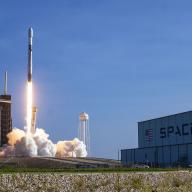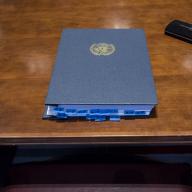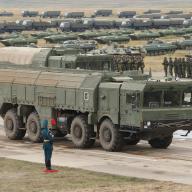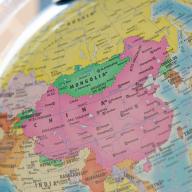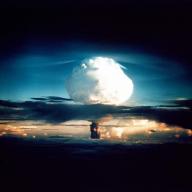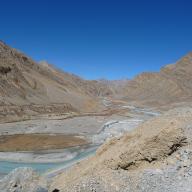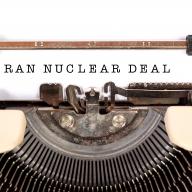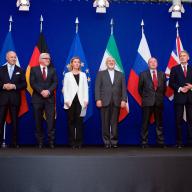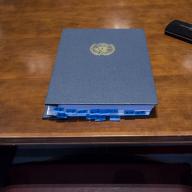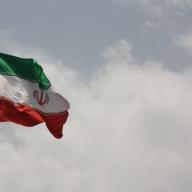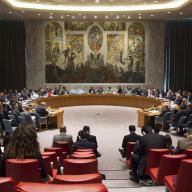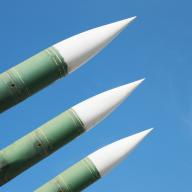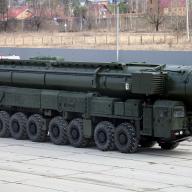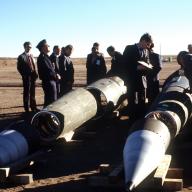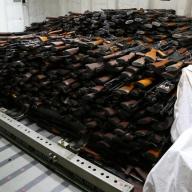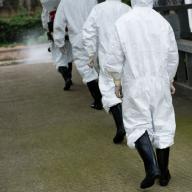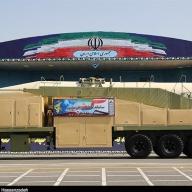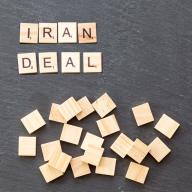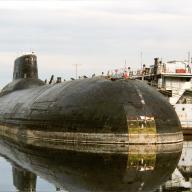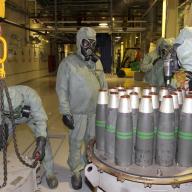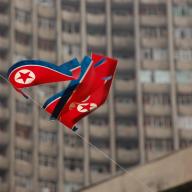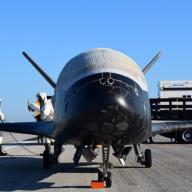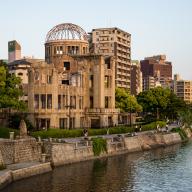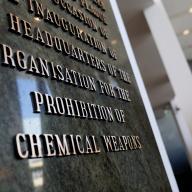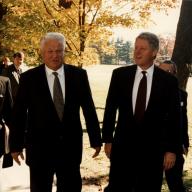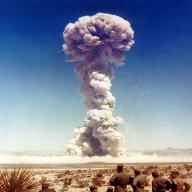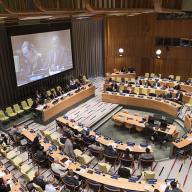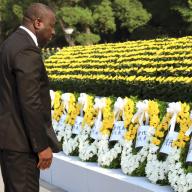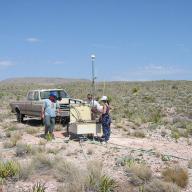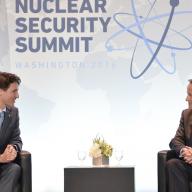European leaders’ responses to the recent Israeli and United States attacks against Iranian nuclear facilities have been striking for both their muted tone and their apparent acceptance of violations of international law.
Related commentary: Weapons of mass destruction
Towards a more secure future through effective multilateralism based on facts, science and knowledge
The Missile Technology Control Regime at a crossroads
The Missile Technology Control Regime is a cornerstone of states’ efforts to control the development, proliferation and use of missiles and other unmanned delivery systems. However, it faces serious structural, operational, membership and technology-related challenges that call for new initiatives and a strengthening of the regime’s resilience.
Estimating world nuclear forces: An overview and assessment of sources
The nuclear weapon inventories of the nine-nuclear armed states—the United States, Russia, the United Kingdom, France, China, Israel and the Democratic People’s Republic of Korea (DPRK or North Korea)—are largely shrouded in secrecy: only three of the nine states have ever publicly declared the size of their nuclear stockpiles and in recent years there has been a notable shift towards a lower overall level of nuclear weapon-related transparency.
Why is Iran producing 60 per cent-enriched uranium?
On 13 April, Iran announced its intention to enrich uranium to 60 per cent U-235. This was characterized by Iran as a response to a sabotage of its vast underground enrichment cascades at Natanz two days before.
How much of a proliferation threat is Iran’s uranium enrichment?
Iran’s atomic energy agency announced last week that it had produced 55 kilograms of 20 per cent-enriched uranium in barely four months.
Joe Biden’s arms control ambitions are welcome—but delivering on them will not be easy
A deadly pandemic to control. An urgent nationwide vaccination programme to roll out. An economic crisis to navigate. Political divisions and distrust deep enough to spark mob violence and terrorism. The 46th President of the United States faces a barrage of critical domestic challenges from day one.
Diluted disarmament in space: Towards a culture for responsible behaviour
Humankind depends on outer space for numerous services, ranging from telecommunications and navigation to disaster management and national security. While the use of space was once associated only with governments, the private sector has become increasingly involved in providing some of these services.
Russia’s nuclear doctrine moves the focus from non-Western threats
In June 2020 Russia made its nuclear doctrine more transparent in terms of why, when and how it would use nuclear weapons. Without naming potential adversaries, Russia is now more explicit about the regional scenarios that could lead to nuclear warfare. It seems to have confirmed that its updated nuclear doctrine is less focused on East Asia, South Asia and the Middle East. At the same time, Russia continues to reserve the right to use nuclear weapons to end conventional military conflicts. This WritePeace blog explores what has changed in the new doctrine and what the changes signal.
China’s detachment from the South Asian nuclear triangle
In contrast with coverage of the recent China–India border conflict, Chinese analysis of nuclear issues in South Asia has been decreasing. As pointed out by Indian, Chinese and US experts, neither China nor India has sought to insert nuclear dynamics into border tensions.
Advances in 3D printing technology: Increasing biological weapon proliferation risks?
The states parties to the Biological and Toxin Weapons Convention (BWC) are gathering in Geneva from 29 July to 8 August for a series of Meetings of Experts. Among other topics, states are reviewing scientific and technological developments that impact the objectives of the treaty.
Fifty years of the NPT—cause for celebration or commemoration?
The Nuclear Non-Proliferation Treaty (NPT), which entered into force in 1970, is turning 50 next year. As suggested by discussions at the Preparatory Committee for the 2020 NPT Review Conference (PrepCom)—held in New York on 29 April–10 May 2019—it might not be a happy anniversary. Despite their ritualistic affirmations that the NPT is the cornerstone of the global nuclear order, states parties remained divided on substantive issues.
The US withdrawal from the Iran deal: One year on
On 8 May last year, US President Donald J. Trump announced that the United States would pull out of the Joint Comprehensive Plan of Action (JCPOA), which sets limits on Iran’s nuclear programme to ensure that it cannot produce nuclear weapons. Despite the US withdrawal, the JCPOA remains in force; it is a multilateral agreement to which seven of the original eight parties still adhere.
The NPT and the TPNW: Compatible or conflicting nuclear weapons treaties?
The 2017 Treaty on the Prohibition of Nuclear Weapons (TPNW) was negotiated with the purpose of strengthening the largely unimplemented disarmament pillar of the 1968 Treaty on the Non-Proliferation of Nuclear Weapons (NPT). Yet, one of the main criticisms against the Treaty has been its alleged incompatibility with the NPT. What is one to make of these conflicting claims? And should the increasing number of TPNW ratifications be seen as good or bad news for the international nuclear order?
To stay or not to stay: Will Europe’s new trade initiative make a difference for Iran?
‘Today we have taken a significant step forward in delivering our commitment under the Iran nuclear deal to preserve sanctions relief for the people of Iran.’ These were the words of Jeremy Hunt, Foreign Secretary of the UK, as he introduced the so-called Special Purpose Vehicle (SPV), which is the latest attempt by the E3 (France, Germany and the UK) at preserving the 2015 Iran nuclear deal, or the Joint Comprehensive Plan of Action
Dissecting international concerns about Iran’s missiles
While trying to save the 2015 Joint Comprehensive Plan of Action (JCPOA), or the Iran nuclear deal, some European leaders have stepped up pressure on Iran’s ballistic missile programme, simultaneously demanding talks and threatening sanctions. Iran—which sees ballistic missiles as crucial to the country’s defence—has responded by saying that its missile programme is non-negotiable.
The crumbling architecture of arms control
At a political rally on Saturday, 20 October, US President Donald J. Trump announced that the United States will withdraw from the 1987 Treaty on the Elimination of Intermediate-Range and Shorter-Range Missiles (INF Treaty). This confirms what has steadily been unfolding over the past couple of years: the architecture of Russian–US nuclear arms control is crumbling.
How much does Russia spend on nuclear weapons?
This topical backgrounder begins with an overview of Russia’s large-scale nuclear modernization programme, which started after the adoption of its state armament programme for 2011–20. It then outlines Russia’s nuclear institutions and how the expenditure is managed within Russia’s federal budget and provides an estimate of Russian spending on nuclear weapons between the years 2010 and 2016.
Russian and US policies on the INF Treaty endanger arms control
The 1987 Treaty on the Elimination of Intermediate-Range and Shorter-Range Missiles (INF Treaty) is on the verge of collapse. The controversy surrounding the treaty has built up over several years and worsened in early 2017 following accusations by the United States that Russia had begun to deploy the missiles during 2016.
SDG16.4 and the collection of data on illicit arms flows: Progress made but challenges ahead
This backgrounder provides an overview of ongoing and potential work on measuring states’ achievement of goal 16.4. It begins by outlining the SDG process and how it has sought to overcome the challenges associated with measuring illicit arms flows. It then summarizes the data collection efforts to date and outlines some possible options for filling the gaps that exist.
Time for Europe to put Iran’s missile programme in context
Given the transatlantic disagreement over the JCPOA, European countries might feel increasing pressure to focus on Iran’s ballistic missile activities in order to find common ground with the USA. But is the Western perspective on Iran’s missile programme based on an objective threat assessment, and is a punitive approach helpful in addressing it?
Will the EU and the USA part ways on the Iran deal?
The Iran nuclear deal has demonstrated that diplomacy can triumph in nuclear non-proliferation: dialogue, rather than military action, can convince states to forgo pursuing nuclear weapons. The European Union has long played an instrumental role in the multilateral diplomacy that produced the historic deal, formally known as the Joint Comprehensive Plan of Action (JCPOA).
The forgotten science of cooperative threat reduction
The announcement that Russia had completed the destruction of its chemical weapons stockpile was rightly applauded as a milestone in multilateral arms control. However, it was also a reminder of the significant part that international non-proliferation and disarmament assistance played in facilitating the implementation of the 1993 Chemical Weapons Convention (CWC).
Celebrating a milestone: Russia completes the destruction of chemical weapons stockpile
On Wednesday the Director-General of the Organisation for the Prohibition of Chemical Weapons (OPCW), Ambassador Ahmet Üzümcü of Turkey, congratulated Russia on completing the destruction of its chemical weapons stockpile which originally totalled 39 967 agent tonnes (i.e. excluding munition weight).
North Korea's Space Launch
North Korea launched a space launch vehicle on 7 February 2016 at around 09:00 local time, with the aim of placing a satellite into the Earth’s orbit.
Another nuclear test announced by North Korea: Searching for a plan of action?
On 6 January 2016, North Korea announced that it had successfully detonated a ‘hydrogen’ or thermonuclear device. Despite international doubt, we shouldn't underestimate North Korea's capabilities.
Tensions in the South China Sea: the nuclear dimension
In the sovereignty disputes in the South China Sea, there is an often overlooked strategic interest pursued by China: the People’s Liberation Army’s (PLA) quest for a credible undersea nuclear deterrent.
Nuclear verification in Iran: managed access
The 7 July deadline for a Joint Comprehensive Plan of Action regarding Iran's nuclear programme expired without a breakthrough but the parties agreed to an extension until the end of 10 July.
The 2015 NPT Review Conference: setting the record straight
The lack of agreement at the 2015 Review Conference of the 1968 Treaty on the Non-Proliferation of Nuclear Weaponsis a big setback for nuclear disarmament.
The implications of the Ebola outbreak for public health and security
The first case of Ebola outside of West Africa was confirmed in Dallas, Texas, which may be the tipping point for properly mobilizing the international community to act.
From ending nuclear testing to detecting tsunamis and missing aircraft: the wider applications of the Nuclear-Test-Ban Treaty
The Comprehensive Nuclear-Test-Ban Treaty (CTBT) prohibits all nuclear explosions anywhere as an effective measure of nuclear disarmament and non-proliferation but is yet to come into force. On 11 April SIPRI, in cooperation with the Swedish Ministry for Foreign Affairs (MFA) and the Swedish Institute of International Affairs (UI), held an event to discuss the CTBT and its wider applications.
Looking beyond the 2014 Nuclear Security Summit
Some 50 heads of state and government are meeting today at the 2014 Nuclear Security Summit (NSS) in The Hague, the Netherlands, to highlight their commitment to strengthening nuclear security, and to agree on measures to prevent and combat nuclear terrorism. While many states hope that the Summit will increase nuclear security, the question remains as to whether the NSS process will be successful in securing all vulnerable weapon-usable nuclear materials.
The role of safeguards in a nuclear weapon-free zone in the Middle East
Safeguards measures play a vital role in international efforts to monitor technologies related to reprocessing and enrichment of nuclear materials.
18 Feb. 2014: Only a pragmatic approach to Iran’s nuclear programme will yield results
Following the November 2013 agreement in Geneva on initial measures to address Iran’s nuclear programme, negotiations begin in Vienna today on additional steps towards a comprehensive solution. In order for these negotiations to succeed, both sides will need to agree on pragmatic measures which assure the international community of the exclusively peaceful nature of the Iranian nuclear programme, and which lead to the removal of all United Nations Security Council sanctions against Iran.
11 Nov. 2013: Time for a more comprehensive approach to the Iran nuclear negotiations
The latest round of negotiations in Geneva between Iran and the five permanent members of the United Nations Security Council plus Germany (the 'P5+1' states) once again failed to reach an agreement on interim steps toward resolving the long-running controversy over the future of Iran's nuclear programme. In the end, the talks faltered due to disputes over technical aspects of Iran's nuclear programme and the sequencing of sanctions relief, leaving the negotiators unable to conclude a much-anticipated deal.
More pain but not gain: productive and unproductive sanctions
The recent additional sanctions against North Korea and Iran are unlikley to change these regimes' policies and could hav enegative effects if they hurt citizens rather than the powerful elite.
The International Atomic Energy Agency and Parchin: questions and concerns
The International Atomic Energy Agency (IAEA) and Iran failed again in two days of intensive talks held in Tehran this week to secure a deal to unblock the IAEA's long-stalled investigation into alleged atom bomb research in Iran. Agency inspectors were also refused access to visit a large military complex at Parchin that they have sought to visit for nearly a year. As tensions mount, it is worth considering why the Parchin visit has become such a hot-button issue in the dispute and whether it is really so important for addressing concerns about Iranian nuclear activities with possible military dimensions.
Explosive potential of North Korean missiles still more diplomatic than nuclear
Today's launch by North Korea of an Unha-3 (or Taepodong-2) long-range rocket is already drawing strong negative reactions from many governments. However successful today's launch was, it does not mean that North Korea has, or is anywhere near having, the capability to launch a long-range ballistic missile strike, especially a nuclear-armed one.
Syria’s chemical weapons and protection against their use: a brief overview
The escalation of the current conflict in Syria gives greater impetus to efforts to determine the fate of Syria's weapon programmes and, in particular, its reported stocks of chemical weapons.
The IAEA and Parchin: do the claims add up?
While the International Atomic Energy Agency has done an excellent job in verifying the nuclear material production activities in Iran’s uranium enrichment plants, it also appears to be willing to risk its technical credibility by insisting on visiting a military site called Parchin, near Tehran.
Using nuclear forensics to increase international nuclear security cooperation
Nuclear forensic analysis (nuclear forensics) has gained prominence as a tool to detect, prevent and deter acts of nuclear terrorism and illicit trafficking of nuclear materials. However, the potential applications of nuclear forensics go beyond nuclear security and demonstrate that cooperation can be achieved in and between a number of international security frameworks.
Riot control agents: improve knowledge to improve safety
A number of recent incidents have reinforced renewed concern regarding states' use of so-called riot control agents (RCAs)⎯particularly tear gases and pepper spray⎯against civilians. The legitimacy of RCAs as a means to maintain and restore public order is based on two assumptions: first, that they do no long-term harm to their targets, and second, that they are used responsibly and appropriately.
The Biological and Toxin Weapons Convention—approaching a mid-life crisis?
The 1972 Biological and Toxin Weapons Convention (BTWC) is one of the most widely ratified multilateral treaties concerning armed conflict since the Geneva Conventions. Its core principle has not been challenged: no country argues that the use of biological weapons is legitimate. Nevertheless, advances in science and technology are changing the very nature of ‘biological agents’ and the ways in which they can be produced and manipulated. As the BTWC approaches 40, is it still up to its primary task of preventing biological warfare?
Taking stock of international security
Perceptions of threats to security are both individual and shared. Currently, many share concerns about recent developments in Iran and North Korea, while many also see in the new approach of the United States a glimpse of hope. SIPRI—with its mandate to ‘contribute to an understanding of the conditions for peaceful solution of international conflicts’—aims through its annual SIPRI Yearbook to provide a basis on which threats can be assessed and to deliver the most relevant facts for the debate.
Making a new START in Russian–US nuclear arms control
Don't open the champagne just yet, but Russia and the United States are tantalizingly close to the finish line in their negotiations on a new nuclear arms reduction treaty to replace the 1991 Treaty on the Reduction and Limitation of Strategic Offensive Arms (START Treaty). Although the fast-track negotiations in Geneva were unexpectedly diverted into the diplomatic slow lane by last-minute wrangling over US missile defence plans, the two sides are widely expected to seal the deal and sign a START follow-on treaty within a matter of weeks.
Swedish declaration on the elimination of nuclear weapons
Nuclear weapons kill immediately and kill over time. They cause devastation and environmental disaster. Twenty-five years ago a UN scientific commission warned that even a limited use of existing nuclear weapons could result in a nuclear winter over large areas over the earth. Recent findings conclude that such temporary climate change could cause the death of many millions of people. Massive use of existing nuclear arsenals would destroy all life on earth, a global suicide.






